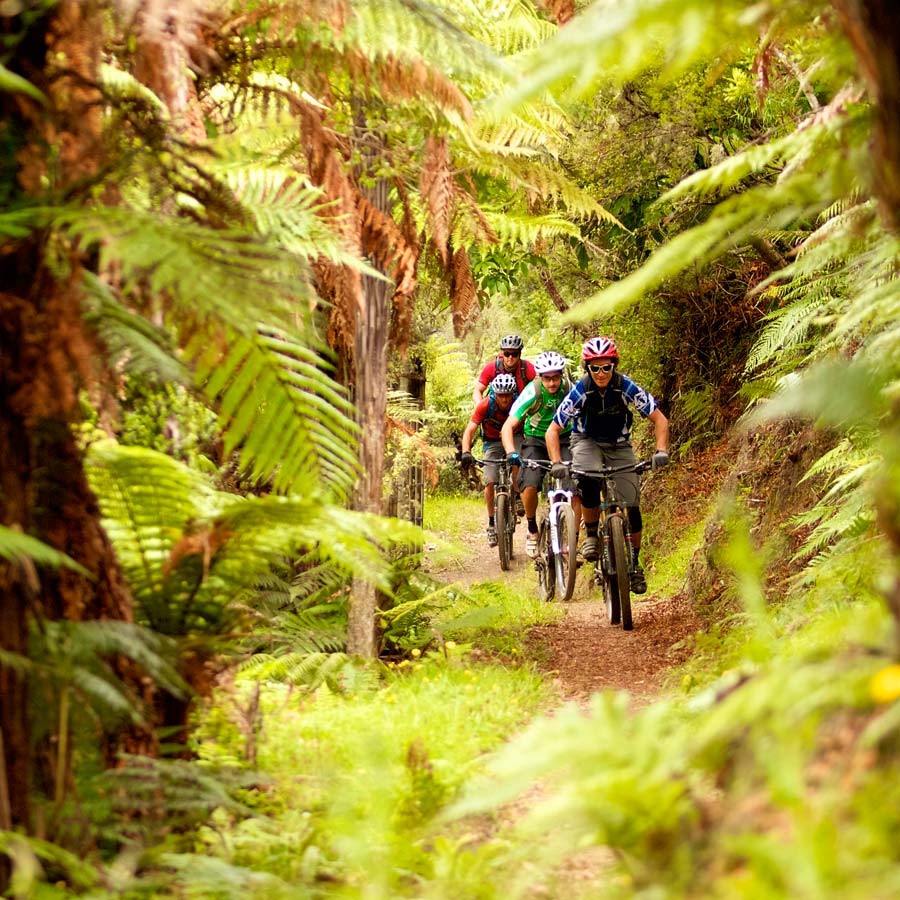Cycling in New Zealand
The New Zealand Cycle Trail project is a national initiative to build a network of cycle trails – Great Rides – throughout New Zealand.
Perhaps the most well-known of these is the Central Otago Rail Trail. This wonderful 150-kilometre cycleway introduces cyclists to gold-rush history in the dramatic landscape of Central Otago. Small towns offering accommodation and eateries along the way ensure that this trail can be experienced with as much indulgence as you choose.
The 42 Traverse in Tongariro National Park (Ruapehu region) is a more challenging prospect. Although it is only 46 kilometres long, the trail covers rugged and isolated countryside and, unlike the Central Otago Rail Trail, there are no eateries or accommodation along the way. Riders will need to carry their own food, first aid kit, warm clothing and tool kit (including a spare tube) for any repairs required along the way. It should only be attempted by those with a reasonable level of fitness.
Wine Tasting
A relaxing way to enjoy cycling in New Zealand is on a wine tour by bike. In wine regions such as Wairarapa and Marlborough, visitors may rent a bicycle and explore the vineyards independently or join a guided group tour around the region.
Self-guided and Guided Tours
Aside from vineyard tours by bike, a range of other self-guided and guided tours are the perfect way for visitors to explore New Zealand by bike. Ranging from short regional bike rides to multi-day road cycle tours from one end of the country to the other, there are options to suit cyclists of all abilities. An advantage with some guided tours is the option to have luggage transported by a bus or minivan, so cyclists don't have to carry it themselves. Mountain bikers can even take the opportunity to brush up their technical skills on a short course with an expert guide. Bear in mind that the first few days of cycling will be the hardest, as riders acclimatise to days spent in the saddle, so don't push yourself too hard!
Gear and Transport
New Zealand offers plenty of places to rent bicycles and gear. Mountain bikes, road bikes and even tandem bicycles are all available, along with child trailers, panniers and all manner of accessories (including essentials such as locks and repair kits!). Some operators offer one-way bike hires, with pick-ups and drop-offs by arrangement. Inter-island ferries, along with most airlines, trains and coaches, will carry bicycles for a fixed charge.
Cycle Safety
In New Zealand, cyclists must wear safety helmets at all times. During the hours of darkness, bikes must be fitted with functioning front and rear lights. It is also a good idea to wear brightly coloured or reflective clothing. When travelling on roadways, cyclists must adhere to New Zealand's road rules – keeping to the left, following the same rules as motor vehicles at intersections, and indicating stops and turns with hand signals at least three seconds prior. Cyclists may ride two abreast where space permits, but they must ride in single file when overtaking other vehicles. Cycle paths should be used whenever possible – they are indicated by signage. Riding on footpaths is prohibited.
